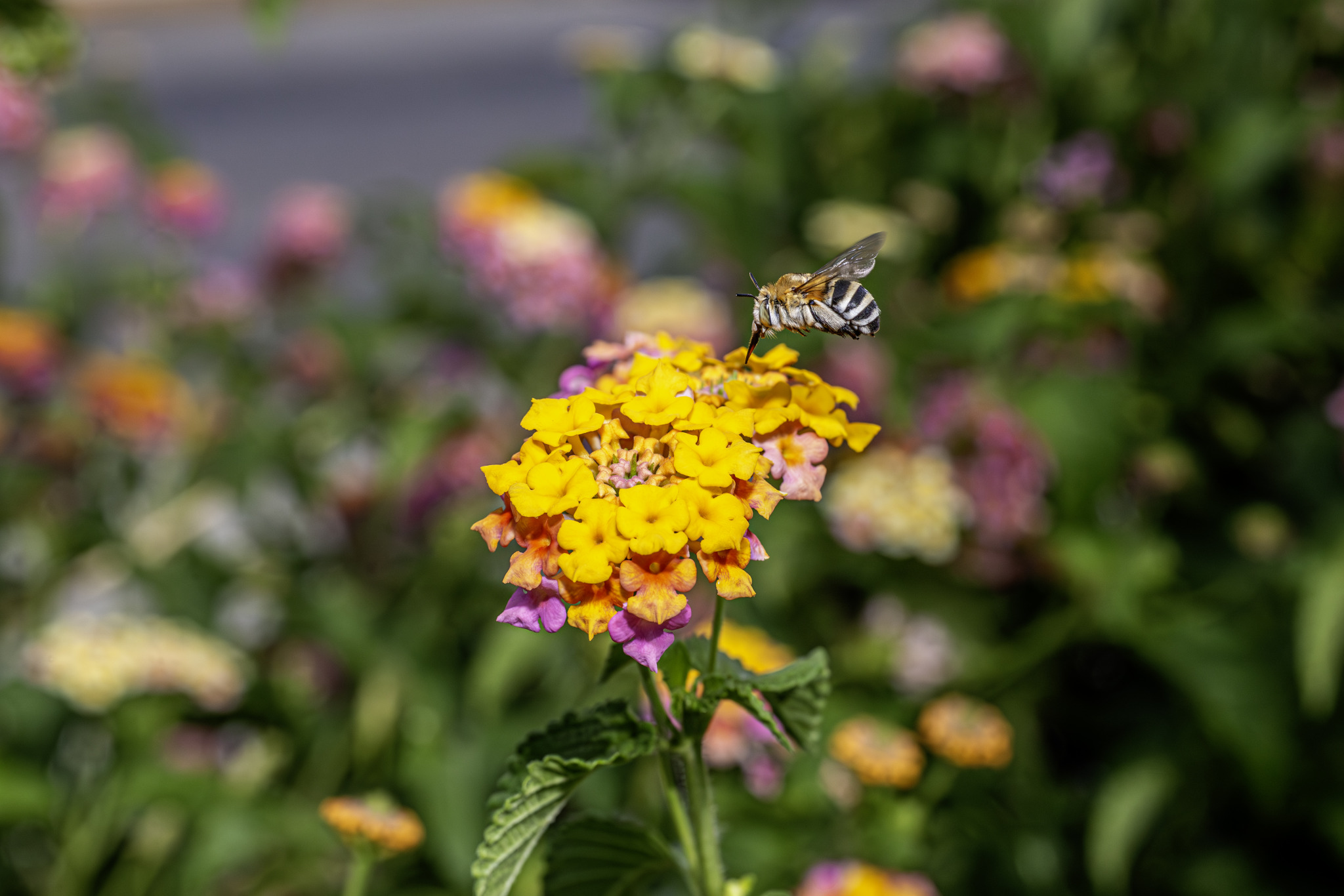The Honey Bee (Amegilla calceifera) is a notable species of bee within the Apidae family. Although it shares the common name “honey bee,” it is distinct from the well-known European honey bee (Apis mellifera). Here are some key details about this species:
Appearance
- Size: Amegilla calceifera is a relatively small bee, with a body length of about 8-12 mm (0.3-0.5 inches).
- Coloration: These bees are characterized by their striking coloration. They typically have a dark body with vibrant blue or metallic green bands on their abdomen. The exact coloration can vary, but it is usually quite vivid.
- Hair: The body is covered with short, dense hairs, which help in the collection of pollen.
Habitat
- Range: Amegilla calceifera is found in various regions across Southeast Asia, including Indonesia, Malaysia, and Thailand.
- Environment: They prefer open habitats with abundant flowering plants. This includes gardens, meadows, agricultural areas, and sometimes forest edges.
Behavior
- Foraging: These bees are active foragers and play a crucial role in pollination. They visit a wide range of flowers to collect nectar and pollen.
- Flight: Known for their rapid and agile flight, they can hover near flowers and move quickly between them.
- Nesting: Unlike the social European honey bee, Amegilla calceifera is generally solitary. Females build individual nests in the ground or in natural cavities. They construct cells for their offspring and provision them with pollen and nectar.
Life Cycle
- Reproduction: Mating typically occurs during the warmer months. After mating, females search for suitable nesting sites.
- Nesting and Egg Laying: Females dig burrows in the ground or use existing cavities. They create individual cells within the nest, each containing a single egg. The cells are stocked with a mixture of pollen and nectar to nourish the developing larvae.
- Development: The larvae develop within the sealed cells, feeding on the provided pollen and nectar until they pupate and eventually emerge as adult bees.
Adaptations
- Pollen Collection: The dense hairs on their bodies are adapted for effective pollen collection, aiding in the pollination of a variety of plants.
- Coloration: Their bright coloration may serve as a warning to potential predators or play a role in thermoregulation.
Ecological Role
- Pollination: Amegilla calceifera is an important pollinator for many plant species. Their foraging activities help in the fertilization of flowers, leading to the production of fruits and seeds.
- Biodiversity: They contribute to the diversity of bee species in their habitats, supporting overall ecosystem health and resilience.
Conservation
- Status: There is limited specific information on the conservation status of Amegilla calceifera, but like many bee species, they could be affected by habitat loss and pesticide use.
- Threats: Habitat destruction, agricultural intensification, and the use of chemical pesticides pose significant threats to their populations.
- Conservation Efforts: Efforts to preserve natural habitats, reduce pesticide use, and promote the planting of native flowering plants can support the conservation of this species and other pollinators.
Amegilla calceifera, with its distinctive coloration and important ecological role, highlights the diversity and complexity of bee species beyond the well-known honey bee. Conservation of their habitats and mindful agricultural practices are essential to ensure their continued presence and ecological contributions.
Visited 833 times, 2 visit(s) today
Views: 1234
Subscribe to the newsletter:
